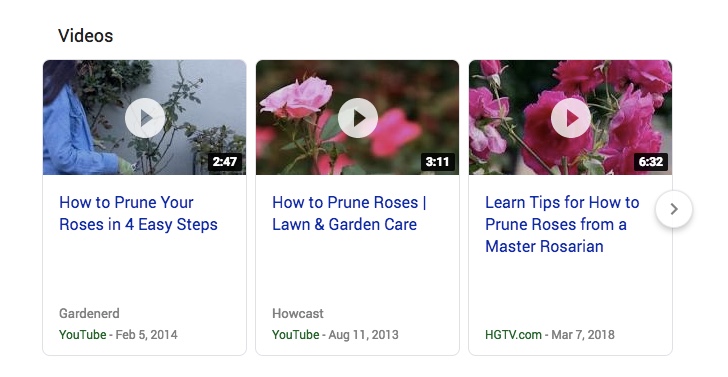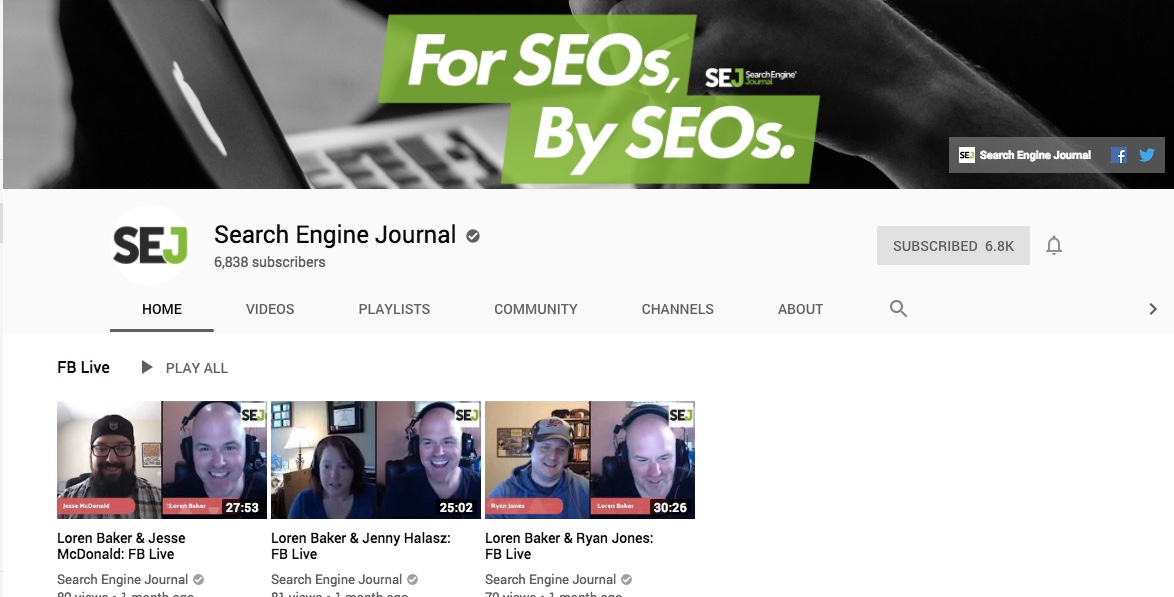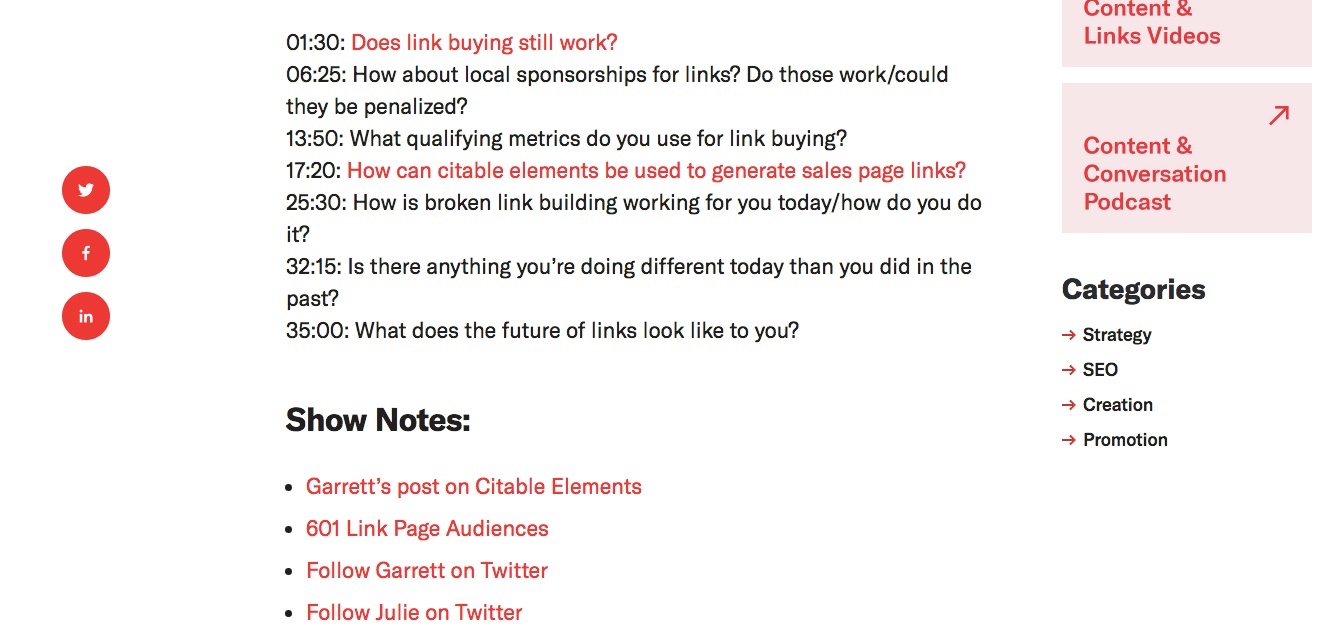I first wrote about using videos, especially on YouTube, for link building in 2010. Here is my opening paragraph to that article:
“Nylon Magazine (and yes I know I’m a little too old to read it) has started putting a YouTube link in every article in their print magazine. It’s a fantastic way to mix media and use offline methods to promote online marketing. Jamie Oliver sends emails to his subscribers containing video messages. This goes to (you guessed it) his YouTube channel.
If you’re reading this today, it probably doesn’t sound like anything too unique, does it?
In fact, it sounds pretty basic.
At the time, it was new.
Now, video is everywhere.
- YouTube isn’t the only player these days, but it’s still a strong player. Vimeo, Vivo, Daily Motion and Twitch are four competitors and surely more will emerge.
- Videos are usually embedded in email newsletters and websites.
- Webinars run non-stop and can be watched live or replayed.
- We all hang out on Google Hangouts or have meetings with GoToMeeting.
- We see our friends on Facebook Live.
- Surely we all share videos from all possible sources on all possible social platforms.
Look at these statistics from Cisco:
- Live Internet video will account for 17% of Internet video traffic by 2022. Live video will be multiplied by 15 between 2017 and 2022.
- Internet video on television will triple between 2017 and 2022. Internet video to TV will account for 27% of consumer fixed Internet video traffic by 2022.
- Consumer video on demand (VoD) traffic will nearly double by 2022. The volume of VoD traffic by 2022 will be equivalent to 10 billion DVDs per month.
- Globally, IP video traffic will represent 82% of all IP traffic (both business and consumer) by 2022, up from 75% in 2017. Global IP video traffic will grow fourfold between 2017 and 2022, a CAGR of 29%. Internet video traffic will grow fourfold between 2017 and 2022, a CAGR of 33%.
It is quite clear that the video does not disappear.
Creating Videos for Link Building: The Basics
Do your homework
As with any content, your first step before creating a video should be to do some extensive research to see what’s already out there.
- What videos are doing well?
- Which ones get the most shares and views?
- What sets them apart from all the rest? (There are different ways to get this information, but two popular tools are Ahrefs’ Content Explorer and BuzzSumo).
It’s important to remember that you can’t measure success just by the number of links your videos get.
Maybe a video gets 3 links but is shared 500 times on Twitter, watched 5,000 times, and then 4 people who want to use your product or service come to you after seeing that video.
Wouldn’t you call that a success?
Bring something new to the table
Originality will always be one of the main concerns in using videos for link building.
Like any other content, you need to think about how to make your videos stand out.
If you are marketing gardening services and you see that there are 500 rose pruning videos, make a video about the tallest or longest lasting roses in the country, or make a series of videos where each video is specific to a region of a country.
Always remember to have good lighting and good sound. It seems ridiculous to have to remind anyone, but I’ve seen a lot of poor quality videos.
If people can’t see you well or the sound is too low/there’s background noise, people won’t sit down.
Make sure your videos look good on mobile. With so many mobile users, this is something that needs to be considered. Don’t forget to make it easy to share your videos.
It’s done for you on YouTube, but you need to make sure it’s done on your site if you’ve embedded the video there.
Youtube
First, let’s check out some stats:
- Every month there are more than 1.9 billion connected YouTube users.
- Every day, people watch over a billion hours of video.
- YouTube has been launched in almost 100 countries and with 80 different languages.
- YouTube is currently the second most popular site in the world, after Google.

Going back to my rose pruning example, we see that two of the three video results on the first page of the SERPs for a search “rose pruning” are YouTube results. In many cases, all three are YouTube results.

Simply put, without video, you lose the chance of getting more SERP real estate and, in my opinion, you lose the chance of getting the visibility that can lead to potentially great links.
Let’s look at Search Engine Journal on YouTube. There are currently over 6,800 subscribers and hundreds of videos.
Obviously, as a columnist for Search Engine Journal, I’m a bit biased, but this is fantastic content. As a link builder, fantastic content is my dream.

As you can see below, this site’s YouTube channel appears as one of the top 10 listings in the SERPs during a trademark search for [Search Engine Journal]. So it’s a great way to occupy more space for your brand on the first page.

Each of these videos, like any piece of content, is a chance for a link. Because we are interested in links here.
Why video is so useful
Videos can be embedded on a site to make content more engaging. Each can be used as a resource to direct someone when trying to build a relationship that will lead to a bond.
Playlists can be created and offered as resources. Transcripts and timestamps can be added to sites where videos are embedded.
Each of these videos can show up in the SERPs in regular search or video search.
When you email your newsletter, you can direct your subscribers to specific videos. You can let everyone know that you have a new series.
You can ask questions that people would like answered in your next video.
If you’re a fan of the Skyscraper technique where you find a piece of content, improve something, then reach out to people who are currently linking to the original content, video is a great way to stand out.
A concrete example
A few months ago, I participated in a video where I talked about old-school link building. This video is part of an ongoing series with Siege Media, which is cataloged on YouTube and the website.
For the first time, snippets of the videos were shown instead of the entirety, and they were shown weeks apart before the full episode was released.
With a video piece, you can do the same thing that you can do with a large piece of content and break it up and market those pieces on their own, and then do the same with the full piece.
Watch how this video appears on the site:

You have timestamps, which are very useful for people who want to go directly to a specific point. The two video clips are linked in these timestamps.
There are exhibit notes, which refer to the discussion we had as well as how to follow us on social media. The social sharing buttons are there.
There are links to the podcast version of the episodes as well as to the brand channel on YouTube. There are also more internal links to keep a visitor on the site.
It all adds up to a great user experience. This is also an important point to note.
When we think of video linking, it’s not just about getting links to your actual videos.
That’s fine if that happens, but it’s more about using videos to generate interest in content that will attract links, either directly or indirectly.
I’ll end with another quote from my original article:
This type of link building will not work with all demographics or niches. This can be a fantastic way to drive more traffic for a fashion site, but not a great way to get more traffic to your retirement benefits site. Some target demographics don’t use social media sites that much yet.
This is no longer true.
From what I can tell, just about everyone has realized the power of social media and video.
It’s fascinating to see how quickly things are changing.
Summary
Time range: Every month I would expect 1-2 links, but I would expect a lot more social shares. In 6 months, I would expect 10 links minimum.
Results detected: A few hours after implementation, you can see any conversions, whether it’s a filled out contact form or an email requesting services. In a month, I would expect the video to rank well for key terms.
Average links sent per month: 2 or more
Necessary tools:
- Ahrefs
- BuzzSumo
- Youtube
- Vimeo
- Long live
- daily movement
- Tic
- Google Hangouts
- facebook live
- Go to a meeting
Benefits of using video for link building:
- Using video for link building is a great way to add more visual interest to your content and simply add more content to your marketing toolkit.
- With the fierce competition we are experiencing today, using videos to help build brand awareness and draw attention to your content is something everyone should consider.
Image credits
All screenshots taken by author, June 2019

